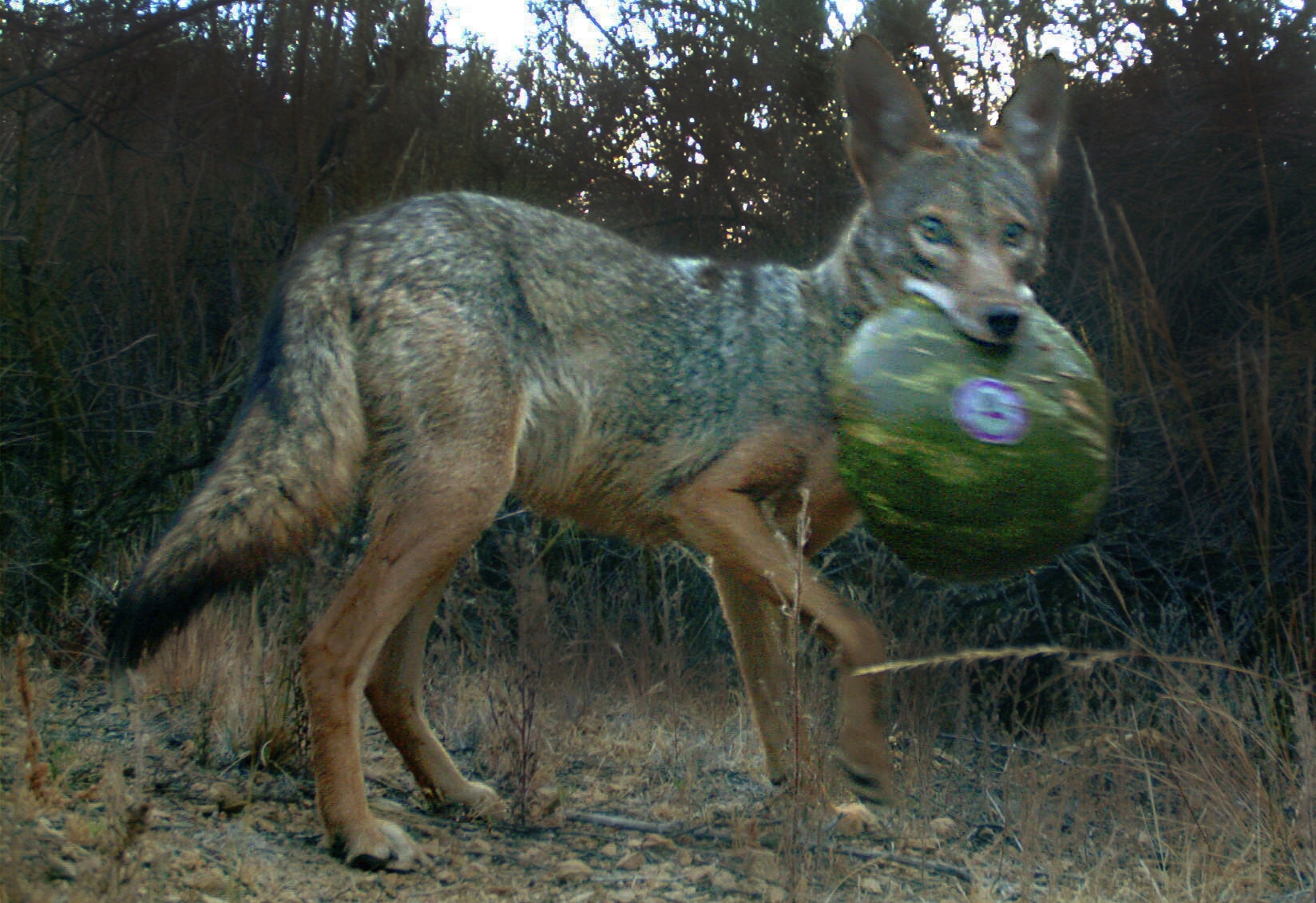News Release
You are viewing ARCHIVED content published online before January 20, 2025.
Please note that this content is NOT UPDATED, and links may not work. For current information,
visit https://www.nps.gov/aboutus/news/index.htm.

National Park Service
|
Subscribe
|
Contact: Ana Beatriz Cholo, 805-750-9356 (cell); 805-370-2385 (office)
THOUSAND OAKS, Calif.-- The final result of a multi-year National Park Service and California State University Northridge (CSUN) research project that studied coyote diets show that these urban canines are not as discriminating in regard to their culinary tastes as their suburban counterparts, according to a new study.Using two different techniques, scat analysis and stable isotope analysis, the study found that human food resources including garbage, ornamental fruits, and domestic cats accounted for between 60 to 75 percent of urban coyote diets. Cat remains were found in 20 percent of urban coyote scat as compared to four percent of suburban coyote scat.
Urban coyotes still eat small animals like rabbits and rodents, but they are the ultimate opportunists. They tend to eat a lot of garbage, ornamental fruits like ficus, loquat, grapes and palm tree fruit and domestic cats.
Suburban coyotes vary their eating habits by season: they typically eat natural prey in the cooler, wetter winter months and include ripe ornamental fruits in the summer months while consuming lesser amounts of human food resources than their urban counterparts.
“What this study shows us is that coyotes in Los Angeles’ urban areas are taking advantage of food sources that we don’t secure,” said ecologist Justin Brown, the lead researcher on the project for Santa Monica Mountains National Recreation Area (SMMNRA), a unit of the National Park Service. “Whether it’s cats, fruits or garbage, the food resources that we have left out for them is why coyotes hang around. We do have some control over coyotes being here and it’s all tied to us. If we don’t provide the food sources in our neighborhoods, they would not be living in them.”
Brown and his supervisor Seth Riley, the wildlife branch chief for SMMNRA, teamed up with graduate student Rachel Larson and her graduate advisor Tim Karels at CSUN to author the recently published study, “Effects of urbanization on resource use and individual specialization in coyotes (Canis latrans) in Southern California” in the journal PloS One (Public Library of Science), an online scientific journal.
“We were not surprised that coyotes ate human food; after all, we did find fast food wrappers in some of the scats,” Larson said. “But what we were surprised about is how much of their diet came from a corn-based food chain. The stable isotopes indicate that up to 38 percent of their diet could come from human leftovers.”
The NPS launched the urban coyote study in May of 2015 with the goal of learning more about the basic ecology of these canids. The information collected is expected to assist residents and policymakers in making informed decisions regarding coyote management. Along with the diet aspects, the research has provided insight into how coyotes use the urban landscape. Researchers monitor this movement by placing GPS collars on them. Ultimately, the project will help identify how city and suburban dwellers can reduce conflict with coyotes.
The research specifically studying their diet began in 2017 when volunteers were recruited to collect coyote scat in a variety of communities around metropolitan Los Angeles including Westlake Village, Culver City, Baldwin Hills, Silver Lake, the San Fernando Valley, Thousand Oaks, Beverly Hills, Marina del Rey, and other communities.
Researchers analyzed and dissected scat and collected whiskers from coyotes that were recovered from vehicle collisions or captured as part of the broader coyote study. Volunteers collected more than 3,100 scat samples and then dissected them during “scat parties.”
Using the whiskers, researchers conducted a stable isotope analysis to examine carbon nitrogen ratios. Scat serves as an excellent way to identify food items by using their non-digestible components like bones, exoskeletons and seeds, but it’s not a good source of information for identifying human foods that are highly digestible, like hamburgers and bread.
Brown recommends that if residents are experiencing unwanted coyotes in their neighborhoods, the best thing to do is to work within your community to remove food resources. This includes picking up dropped fruit and not leaving pet food outside. A more recent analysis with these same whisker samples (that was not included in this specific paper) found that urban coyotes also consume a lot of pet food.
Brown dismisses the idea that urban coyotes would suffer if residents stopped leaving food out.
“Coyotes are very mobile,” Brown said. “They would not sit there and starve to death. They would move on.”
Scientists at Santa Monica Mountains National Recreation Area have been studying carnivores in and around the Santa Monica Mountains since 1996.
Santa Monica Mountains National Recreation Area (SMMNRA) is the largest urban national park in the country, encompassing more than 150,000 acres of mountains and coastline in Ventura and Los Angeles counties. A unit of the National Park Service, it comprises a seamless network of local, state, and federal parks interwoven with private lands and communities. As one of only five Mediterranean ecosystems in the world, SMMNRA preserves the rich biological diversity of more than 450 animal species and 26 distinct plant communities. For more information, visit nps.gov/samo.
###
Last updated: March 12, 2020
